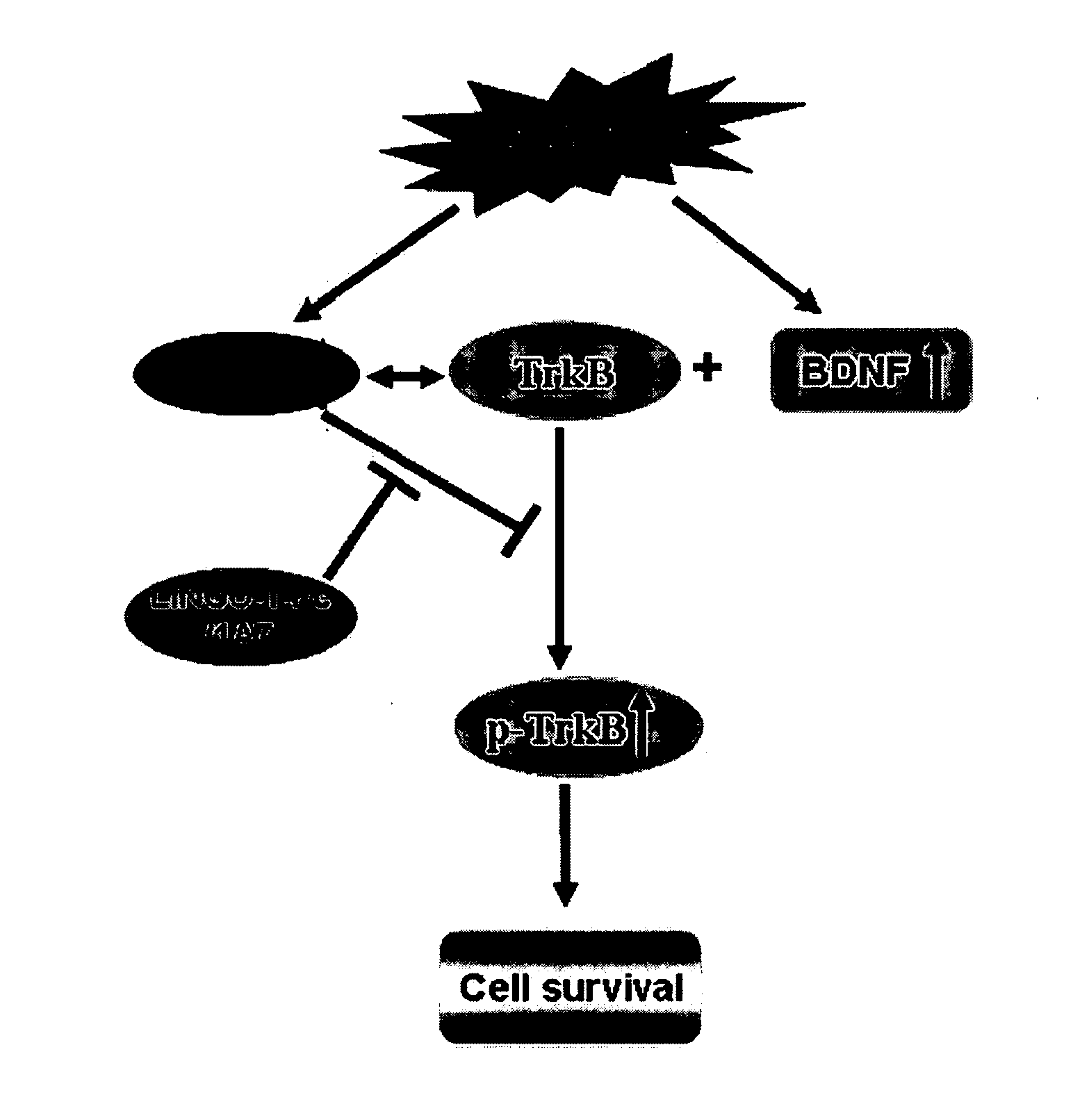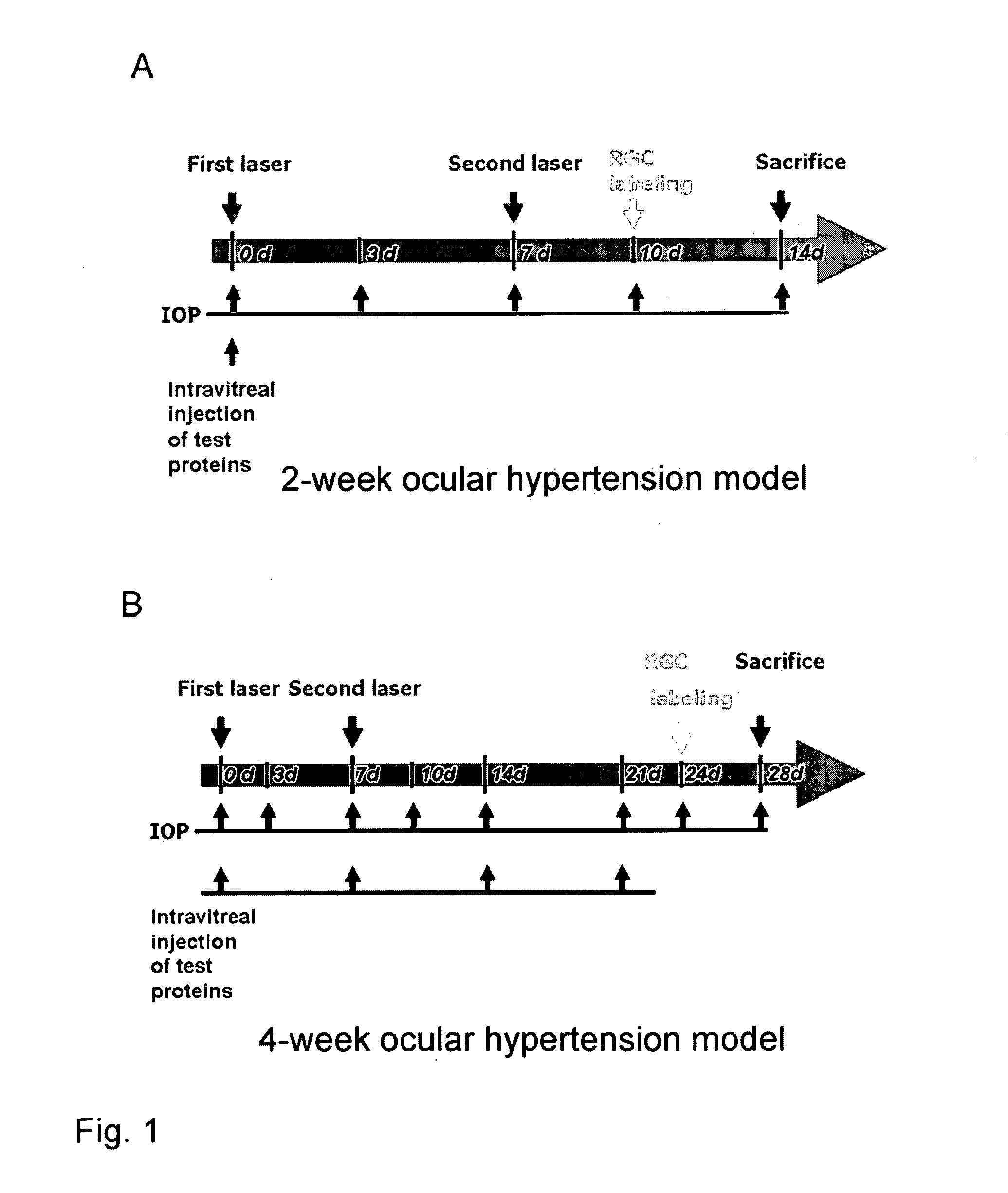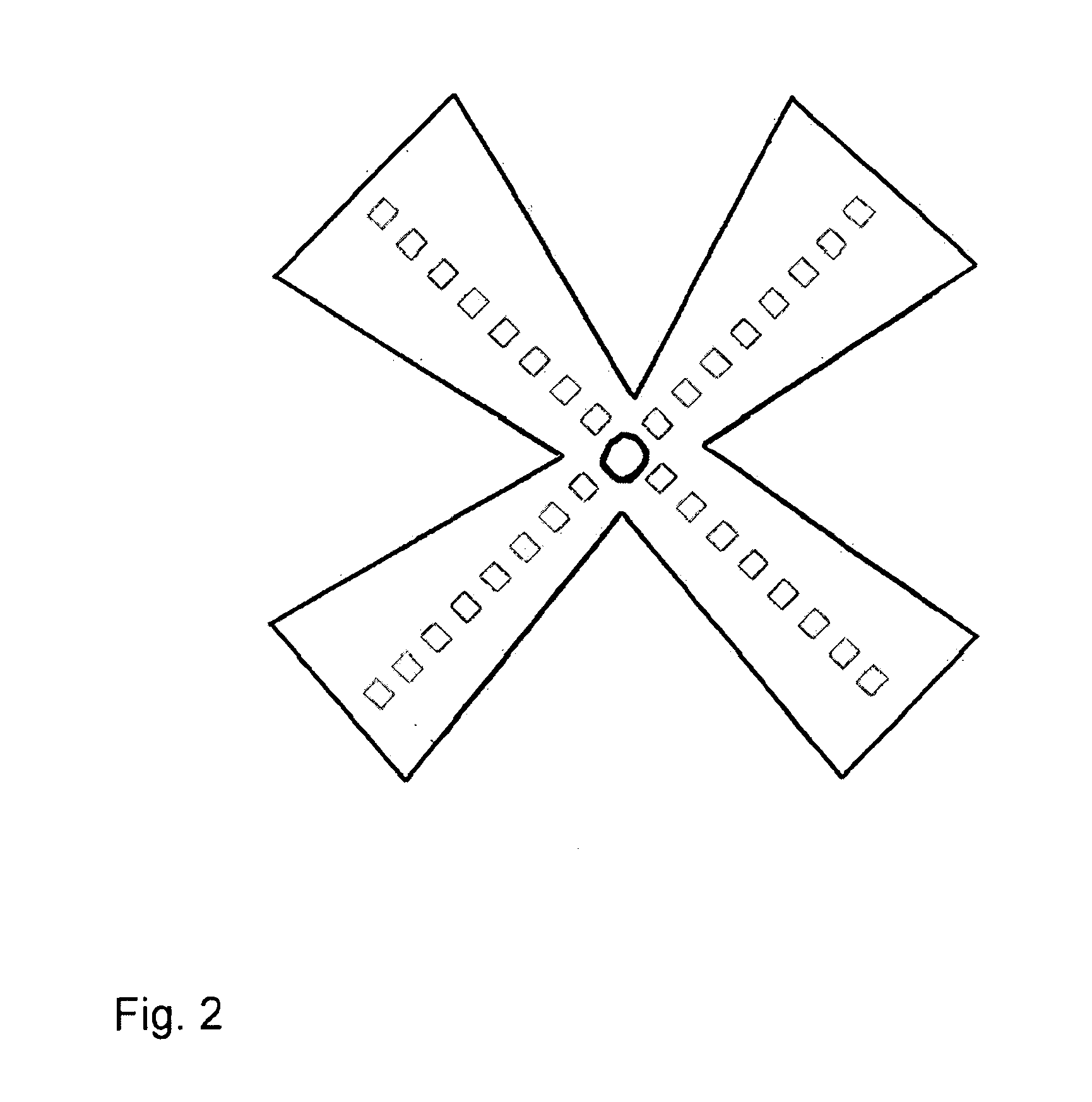Methods for Treating Pressure Induced Optic Neuropathy, Preventing Neuronal Degeneration and Promoting Neuronal Cell Survival Via Administration of LINGO-1 Antagonists and TrkB Agonists
a technology of optic nerve and lingo-1, which is applied in the directions of dna/rna fragmentation, fusion polypeptide, peptide/protein ingredients, etc., can solve the problems of untreated blindness, headache, blurred vision, etc., and achieve the effect of inhibiting the cell survival signaling pathway, promoting the activity of the jnk signaling pathway, and promoting the phosphorylation and activation of the trkb signaling
- Summary
- Abstract
- Description
- Claims
- Application Information
AI Technical Summary
Benefits of technology
Problems solved by technology
Method used
Image
Examples
example 1
Increased Expression of LINGO-1 in a Rat Glaucoma Model
[0341]The expression of LINGO-1 was examined in a rat glaucoma model. In this model, an argon laser was used to block the outflow of aqueous humor by photocoagulation of the limbal and episcleral drainage vessels, resulting in reliable increase of intraocular pressure (IOP) (See FIG. 1).
[0342]To generate a ocular hypertensive state, the limbal and three episcleral veins were photocoagulated twice at a 7-day interval using an Argon laser. Examination of the aqueous veins prior to and immediately after the laser photocoagulation revealed a marked decrease in venous blood flow, as shown in FIG. 3.
[0343]LINGO-1 expression was examined in normal and injured rat retina sections. Normal retinal ganglion cells (RGCs) expressed low level staining for LINGO-1, but much stronger immunoreactivity for LINGO-1 occurred in RGCs at 2 weeks after laser coagulation. The number of labeled RGCs and the intensity of labeling both increased (See FIG....
example 2
LINGO-1 Antagonists Act as Neuroprotectants Without Affecting Intraocular Pressure
[0345]Experimental ocular hypertension can be monitored by measuring changes in pressure or neuronal survival. Therefore, the effect of LINGO-1 antagonists on both intraocular pressure and RGC survival was examined. Animals were subjected to laser treatment, as described supra and immediately afterwards received an intravitreal injection of LINGO-1-Fc, 1A7 or control protein.
[0346]The intraocular pressure (IOP) in both treated and untreated eyes was monitored. IOP in the contralateral left eye of treated animals was about 13 mmHg (See FIG. 6) and remained at the same level through the experiment. The IOP of the laser-treated right eye in all four groups increased after the first laser surgery, reached approximately 22 mmHg and remained at this level until sacrifice. Under these experimental conditions, treatment with LINGO-1-Fc and the neutralizing anti-LINGO-1 antibody, mAb 1A7, did not lower IOP (See...
example 3
LINGO-1 Antagonists Alone Do Not Promote Survival of Retinal Ganglion Cells In Vitro
[0351]To study the effects of LINGO-1-Fc on RGC survival further, an RGC primary culture system was used (Meyer-Franke et al., Neuron, 15:805-819 (1995)). Dissociated retinal cultures were grown for 3 days in the presence of control protein or LINGO-1-Fc. Primary RGCs were identified by Thy 1.1 immunostaining, a marker for RGCs, and counted. Unlike the evident neuroprotective activity in vivo, under these experimental conditions, LINGO-1-Fc treatment alone did not promote survival of cultured RGCs (See FIG. 9).
PUM
| Property | Measurement | Unit |
|---|---|---|
| dissociation constant | aaaaa | aaaaa |
| dissociation constant | aaaaa | aaaaa |
| dissociation constant | aaaaa | aaaaa |
Abstract
Description
Claims
Application Information
 Login to View More
Login to View More - R&D
- Intellectual Property
- Life Sciences
- Materials
- Tech Scout
- Unparalleled Data Quality
- Higher Quality Content
- 60% Fewer Hallucinations
Browse by: Latest US Patents, China's latest patents, Technical Efficacy Thesaurus, Application Domain, Technology Topic, Popular Technical Reports.
© 2025 PatSnap. All rights reserved.Legal|Privacy policy|Modern Slavery Act Transparency Statement|Sitemap|About US| Contact US: help@patsnap.com



